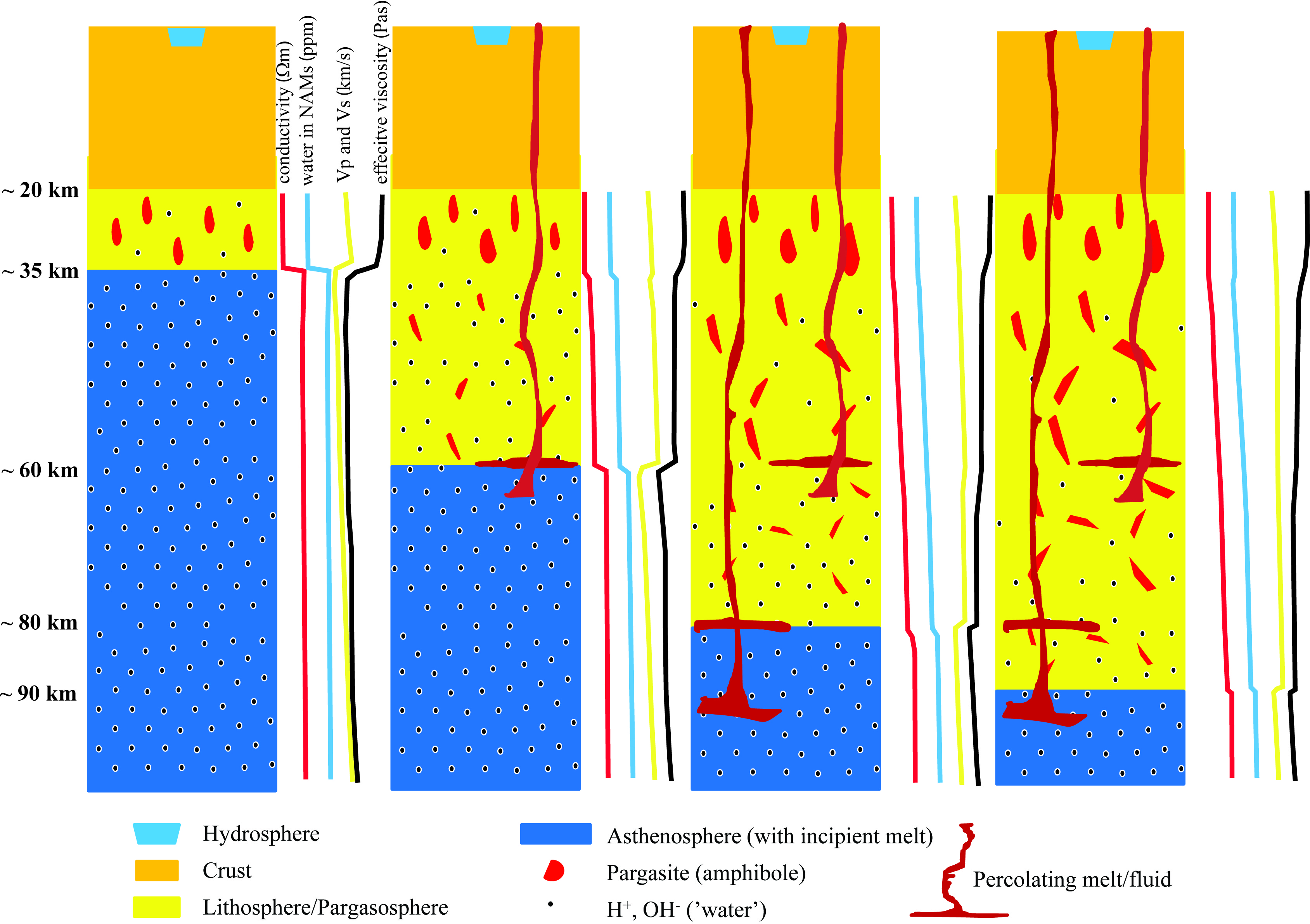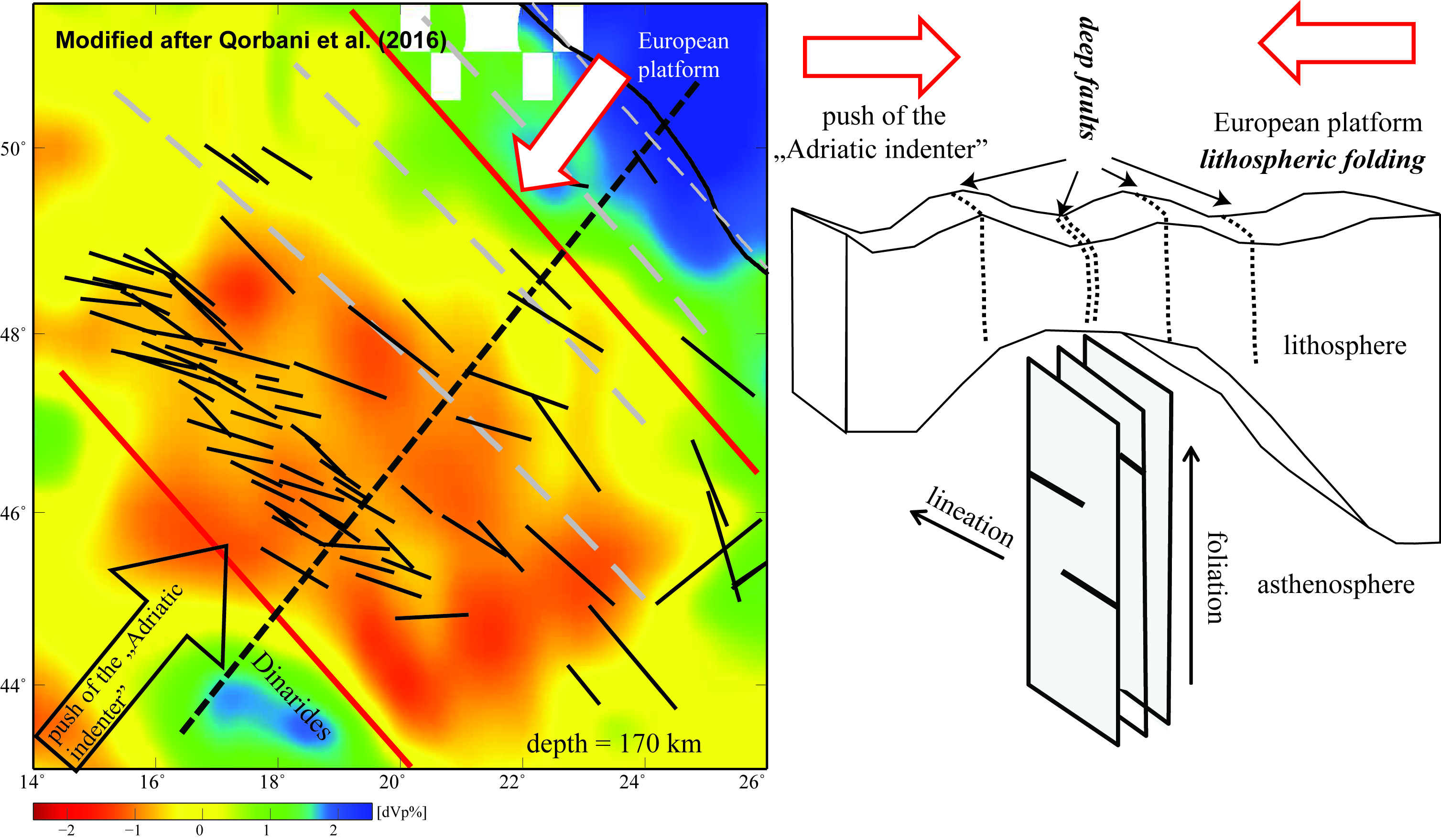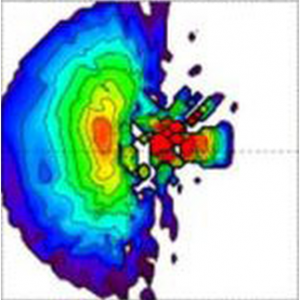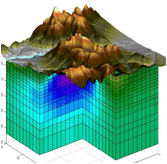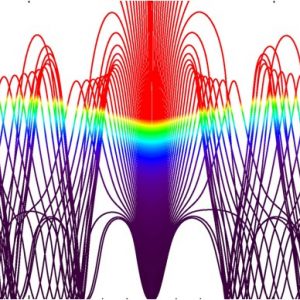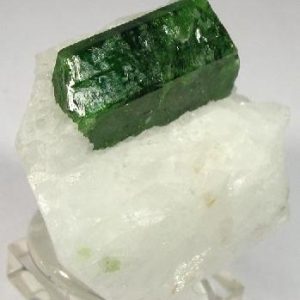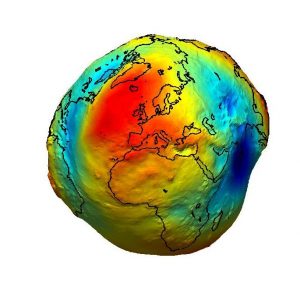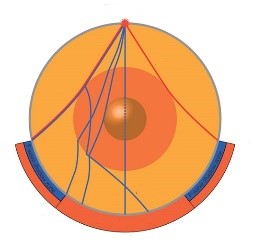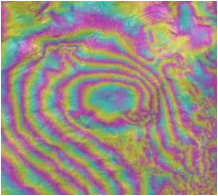Lithosphere physics
Earth is a unique planet and the discovery of its surface and near space has experienced remarkable advances, yet, relatively little known about its interior. ‘Water’ is an indispensable component of life, but also an ultimate ‘ingredient’ for making Earth a geologically ‘living’ planet. Plate tectonics implies that the Earth’ rigid outer shell, the lithosphere, ‘floats’ on the underlying less viscous asthenosphere. The reasons for their contrasting behaviours are still highly speculative. The everyday effects of plate tectonic activity (earthquakes, volcanism) obviously have great societal importance, however, the more precise appreciation of the lithosphere-asthenosphere boundary (LAB) remained an ultimate endeavour for Earth Sciences. The recently developed ‘pargasosphere’ concept may offer a novel explanation how trace amount of ‘water’ and its speciation in the Earth interior accounts for the variations in physical and geochemical properties at the LAB under young extensional basins and oceanic plates. Our home, the Pannonian Basin (a young extensional basin) is excellent natural laboratory to test the inferences of this concept. The aim of our research is to implement a large-scale multidisciplinary Earth Science experiment providing an unprecedentedly detailed insight into the Earth Interior with special respect to the LAB. The novel outcomes could significantly contribute to refine and develop global analogue and numerical plate tectonic models.
